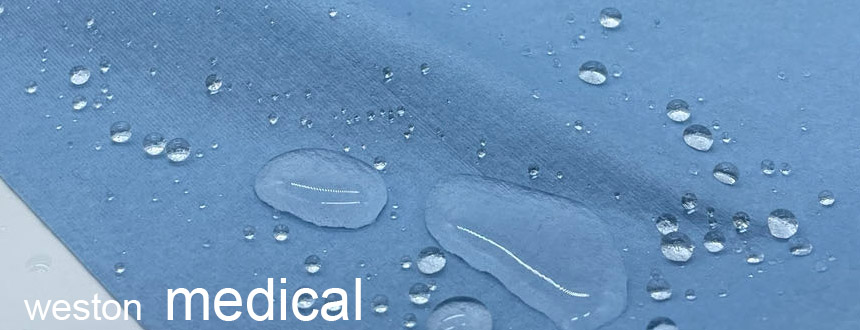A Comparative Analysis of SMS and Wood Pulp Spunlace Nonwoven Fabrics as Surgical Gown Materials
Introduction:
In the field of healthcare, the choice of materials for surgical gowns plays a crucial role in ensuring safety, comfort, and protection for both healthcare professionals and patients. Two commonly used materials for surgical gowns are SMS (Spunbond-Meltblown-Spunbond) and wood pulp spunlace nonwoven fabrics. This essay aims to provide a comprehensive comparative analysis of the advantages offered by SMS and wood pulp spunlace nonwoven fabrics as surgical gown materials.
SMS Fabric:
SMS fabric is produced through a combination of spunbond and meltblown technologies, resulting in a three-layer composite material. The following are the key advantages of SMS fabric in surgical gown applications:
Fluid Resistance: SMS fabric exhibits excellent liquid barrier properties, effectively preventing the penetration of blood, bodily fluids, and other liquids. The meltblown layer acts as a filter, providing a high level of fluid resistance and protection.
Breathability: SMS fabric's micro-porous structure allows for good breathability, facilitating air circulation and reducing discomfort for healthcare professionals during long surgical procedures. This enhanced breathability contributes to improved comfort and reduces the risk of heat stress.
Anti-Static Properties: SMS fabric possesses inherent anti-static properties, minimizing the generation of static electricity and reducing the accumulation of dust particles. This feature helps to prevent cross-contamination and maintain a sterile environment in the operating room.
Durability: SMS fabric is engineered to be highly durable, with enhanced resistance to abrasion and tearing. It can withstand the rigors of surgical procedures, ensuring the gown remains intact and effective throughout the operation.
Wood Pulp Spunlace Nonwoven Fabric:
Wood pulp spunlace nonwoven fabric is made from natural wood pulp fibers using a hydro-entanglement process. The following advantages make it a compelling choice for surgical gown materials:
Softness and Comfort: Wood pulp spunlace fabric offers a soft and gentle texture, providing enhanced comfort for both healthcare professionals and patients. Its smooth surface reduces friction against the skin, minimizing irritation and enhancing the overall user experience.
Moisture Absorption: The natural wood pulp fibers in spunlace fabric possess excellent moisture absorption capabilities. This feature allows the fabric to absorb and wick away patient fluids, sweat, and other secretions, keeping the surgical area dry and improving hygiene.
Eco-Friendliness and Biodegradability: Wood pulp spunlace fabric is derived from renewable natural resources and is biodegradable. It offers a more environmentally friendly alternative compared to synthetic materials, reducing the ecological footprint associated with surgical gown disposal.
Hypoallergenic: Wood pulp spunlace fabric is generally hypoallergenic and non-irritating to the skin. This property reduces the risk of allergic reactions and skin sensitivities, making it suitable for patients with sensitive skin or allergies.
Conclusion:
In conclusion, both SMS fabric and wood pulp spunlace nonwoven fabric have distinct advantages as surgical gown materials. SMS fabric excels in fluid resistance, breathability, anti-static properties, and durability. On the other hand, wood pulp spunlace fabric stands out in terms of softness, comfort, moisture absorption, eco-friendliness, and hypo allergenicity. The choice between these materials depends on the specific requirements of the surgical setting, considering factors such as fluid exposure, comfort needs, environmental considerations, and patient sensitivities. By understanding their unique characteristics, healthcare professionals can make informed decisions when selecting the most suitable material for surgical gowns, ensuring optimal performance, protection, and comfort in clinical settings.

